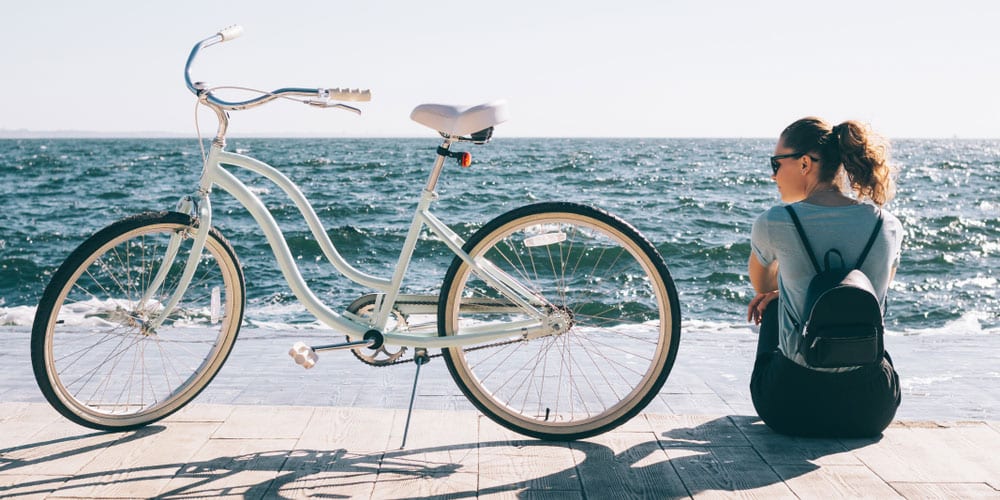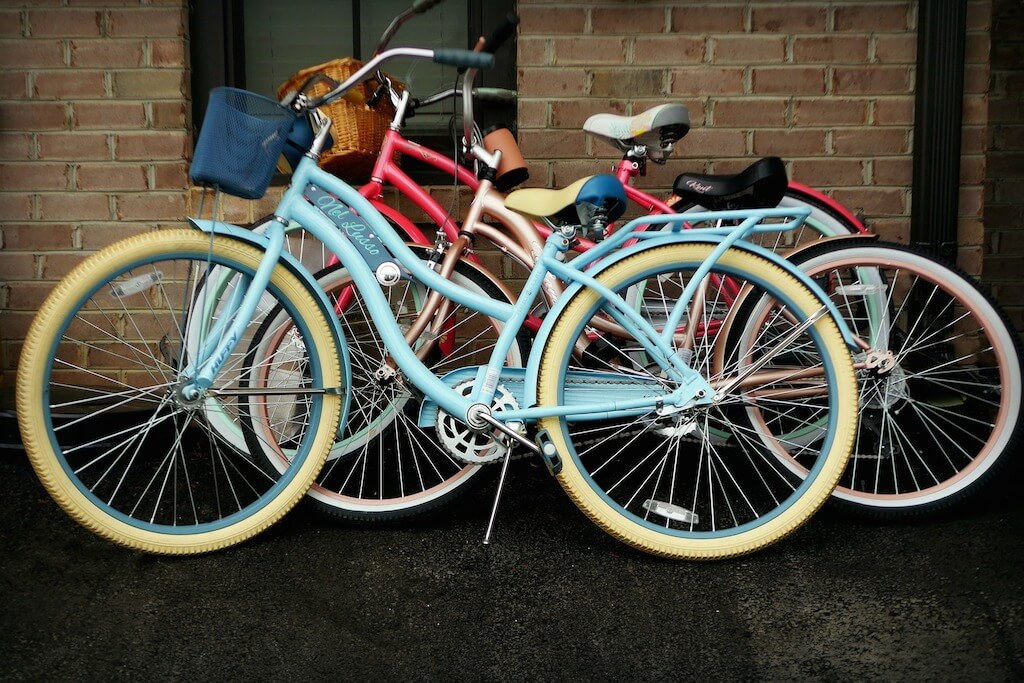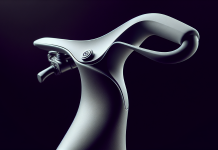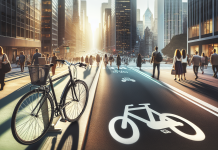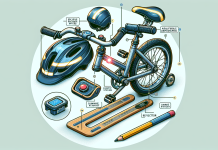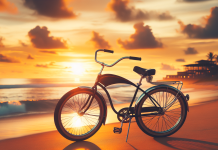Whether you’re a casual rider or a seasoned cyclist, keeping your cruiser bike in optimal condition is crucial for a smooth and enjoyable ride.
Regular maintenance plays a crucial role in maximizing the lifespan and performance of your cruiser bike.
From checking tire pressure and cleaning the chain to inspecting brakes and ensuring proper lubrication, this article highlights the essential maintenance tasks every cruiser bike owner should know and follow.
Investing a little time and effort into maintaining your cruiser bike can ensure a safe, reliable, and pleasurable biking experience for years to come.
Table of Contents
1. Cleaning the Bike
Keeping your cruiser bike clean is an essential part of its maintenance routine. Regular cleaning not only helps to maintain its appearance but also extends the life of its components. Let’s dive into the key areas to focus on when cleaning your bike.
1.1 Cleaning the Frame
Start by rinsing off any loose dirt or debris from the frame using a hose or bucket of water. Then, grab a soft sponge or cloth and apply a bike-specific cleaner or mild detergent solution to scrub the frame gently.
Pay attention to hard-to-reach areas, such as the bottom bracket and rear dropouts. Rinse thoroughly to remove any soap residue and dry with a clean towel. Pro tip: Avoid using strong chemicals or high-pressure water, as it may damage the bike’s finish.
1.2 Lubricating the Chain
A well-lubricated chain is crucial for smooth and efficient pedaling. Begin by wiping off any dirt or grime from the chain using a clean rag. Then, apply a quality bike chain lubricant, ensuring each link is properly coated. Allow the lubricant to penetrate for a few minutes, then wipe off any excess oil. Regular chain lubrication helps to prevent rust and increases its lifespan.
1.3 Cleaning the Brakes
Maintaining clean and properly functioning brake systems is vital for your safety. Use a clean rag or a brush to remove dirt or debris from the brake calipers and pads.
If the pads are heavily contaminated or worn out, consider replacing them. Inspect the brake cables for any signs of fraying or kinks and replace if necessary. Lastly, wipe down the brake lever surfaces to remove any dirt or grease accumulation.
1.4 Checking the Tires
Properly inflated and well-treaded tires ensure a smooth and comfortable ride. Begin by checking the tire pressure using a pressure gauge, referring to the recommended range specified on the sidewall.
Inflate or deflate the tires accordingly. Inspect the tire tread for any signs of wear or damage. If the tread is worn down significantly or there are visible cuts or punctures, it is advisable to replace the tires.
1.5 Cleaning the Gears
The gears of your cruiser bike play a crucial role in maintaining a steady and efficient pedaling cadence. Use a dry brush or a rag to remove dirt or debris from the gear cassette and derailleur.
If necessary, a mild degreaser can be applied to dislodge stubborn grime. Gently wipe off any excess degreaser and thoroughly dry the gears. Avoid directly spraying water onto the gears, as it can facilitate corrosion.
2. Inspecting and Adjusting Components
Regularly inspecting and adjusting various components of your cruiser bike ensures optimal performance and safety on the road. Let’s go through the essential steps of this maintenance process.
2.1 Checking the Handlebars
The handlebars are vital for steering and maintaining control over your bike. Inspect them for any signs of cracks or damage. Ensure that the handlebar grips are secure and free from excessive wear. Test the handlebar rotation by turning it to the left and right. If there is any resistance or unusual noise, it may indicate a need for lubrication or adjustment.
2.2 Inspecting the Brake Levers
The brake levers are the primary control for your bike’s braking system. Ensure that they are securely attached to the handlebars and are in proper working condition.
Squeeze the levers to check for proper brake engagement and release. If the levers feel loose or do not return to their original position, they may require adjustment or replacement.
2.3 Checking the Saddle
A comfortable and properly adjusted saddle is essential for an enjoyable riding experience. Inspect the saddle for any visible damage, such as cracks or tears.
Check the saddle height and tilt to ensure it is set according to your preference. Tighten the saddle clamp bolts if necessary. Remember to test the saddle’s stability by sitting on it and rocking side to side.
2.4 Inspecting the Pedals
Pedals are subjected to a lot of stress and impact during each ride. Inspect them for any signs of wear, cracks, or loose bearings. Tighten any loose pedals using a pedal wrench. If the pedals are excessively worn or damaged, consider replacing them for optimal performance and safety.
2.5 Adjusting the Gear Shifting
Smooth gear shifting is crucial for maintaining an efficient riding experience. Check the cables and housing for any signs of wear, fraying, or corrosion.
Ensure that the gears shift smoothly by cycling through all the available gears. If you experience any difficulty in shifting or hear strange noises, it may indicate the need for cable adjustments or lubrication.
3. Maintaining the Brakes
Maintaining properly functioning brakes is vital for your safety while riding a cruiser bike. Regular inspection and maintenance of the brake system will ensure reliable stopping power. Let’s explore the necessary steps for brake maintenance.
3.1 Checking Brake Pads
The brake pads are responsible for creating the necessary friction to stop your bike. Inspect them for wear, making sure there is sufficient pad material remaining.
If the pads are excessively worn down or show signs of damage, replace them immediately. Additionally, check the alignment of the brake pads and make adjustments if they are rubbing against the tire or not engaging properly.
3.2 Adjusting Brake Tension
Proper brake tension ensures efficient stopping power. Check the brake cables for any signs of fraying or kinking, and replace them if necessary. To adjust brake tension, locate the brake barrel adjuster on the brake caliper or lever.
Turn it clockwise to increase tension or counterclockwise to decrease tension, ensuring the brakes engage and disengage smoothly.
3.3 Cleaning Brake Surfaces
Over time, brake surfaces can accumulate dirt, debris, and brake pad residue, hindering their performance. Use a clean rag or a specialized brake cleaner to wipe down the brake surfaces, removing any contaminants. Be cautious not to get any cleaner or lubricant on the brake pads or rotors, as it may compromise their effectiveness.
3.4 Inspecting Brake Cables
Brake cables are under constant tension and are subjected to wear and tear. Inspect the brake cables for any signs of fraying, rust, or compression.
If you notice any issues, replace the cables immediately. Additionally, ensure the cables are properly lubricated to allow smooth operation and prevent corrosion.
4. Adjusting the Gears
Properly adjusted gears ensure a smooth and efficient pedaling experience on your cruiser bike. Regularly inspecting and adjusting the gear system will ensure optimal performance. Let’s go through the essential steps to properly adjust your gears.
4.1 Inspecting Gear Cables
Start by inspecting the gear cables for any signs of wear, fraying, or corrosion. Replace the cables if necessary. Check the cable housing to ensure it is properly seated and not excessively worn. Lubricate the cable with a specialized bike lubricant according to the manufacturer’s recommendations.
4.2 Checking Gear Alignment
Check the alignment of the gears by shifting through all the available gears. Each gear should engage smoothly without any hesitation or resistance. If you notice any issues, such as the chain slipping or making grinding noises, it may indicate misalignment. Refer to your bike’s manual or consult a professional for proper gear alignment adjustments.
4.3 Adjusting Gear Tension
To adjust gear tension, locate the barrel adjusters on the gear shifters or derailleurs. Turn the barrel adjusters clockwise to increase tension or counterclockwise to decrease tension. Make small adjustments until the gears shift smoothly and accurately. Remember to test the gears while riding to ensure their optimal performance.
4.4 Lubricating Gear Mechanism
The gear mechanism consists of multiple moving parts that require proper lubrication. Apply a small amount of bike-specific lubricant to the pivot points of the derailleurs, jockey wheels, and other moving parts. Wipe off any excess lubricant to prevent attracting dirt and debris.
5. Maintaining the Chain
The chain is a crucial component that transfers power from your legs to the wheels. Regular chain maintenance will ensure smooth pedaling and extend the life of your drivetrain. Let’s explore the necessary steps to maintain your cruiser bike’s chain.
5.1 Cleaning the Chain
Start by wiping off any dirt or debris from the chain using a clean rag. For a deep clean, you can use a specialized chain cleaning tool or a brush with degreaser. Apply the degreaser to the brush or tool and scrub the chain thoroughly, removing all accumulated grime. Rinse the chain with water and dry it with a clean towel.
5.2 Lubricating the Chain
A well-lubricated chain reduces friction and prolongs its lifespan. Apply a small amount of high-quality bike chain lubricant to each link, ensuring proper coverage.
Allow the lubricant to penetrate the chain for a few minutes, then wipe off any excess oil with a clean rag. Remember to lubricate your chain after cleaning, as well as periodically during regular maintenance intervals.
5.3 Checking for Chain Wear
Over time, chains stretch and wear out. Check your chain for signs of wear by using a chain checker tool or a ruler. If the chain measures beyond the recommended threshold specified by the manufacturer, it is advisable to replace it. Riding with a worn-out chain can significantly increase wear on other drivetrain components.
5.4 Adjusting Chain Tension
Proper chain tension ensures smooth shifting and minimizes the risk of chain derailment. Most cruiser bikes feature a derailleur system that automatically maintains the chain tension. However, if you notice excessive chain slack or tension, refer to your bike’s manual or consult a professional for proper adjustments.
6. Checking the Tires
Regularly checking the condition of your cruiser bike’s tires is crucial for safety and optimal performance. Let’s explore the necessary steps for inspecting and maintaining your bike’s tires.
6.1 Inspecting Tire Pressure
Properly inflated tires provide superior traction, handling, and rolling resistance. Use a pressure gauge to check the tire pressure, referring to the recommended range specified on the sidewall. Inflate or deflate the tires accordingly. Avoid overinflating, as it may lead to reduced traction and a harsher ride, or underinflating, as it may increase the risk of flats or damage to the rims.
6.2 Checking Tire Tread
Inspect the tire tread for signs of wear or damage. Worn-out tread significantly reduces grip and increases the risk of slipping, especially on wet surfaces.
Look for any cuts, punctures, or bulges on the tire sidewalls, as they may indicate a need for replacement. If the tires are excessively worn or damaged, it is advisable to replace them promptly to maintain optimal performance and safety.
6.3 Repairing or Replacing Flat Tires
Flat tires are an inevitable part of cycling, but they can be easily fixed or prevented. Inspect your tires for any visible punctures or debris stuck in the tread. For minor punctures, use a tire patch kit to repair the hole.
However, if the damage is extensive or the tire is beyond repair, consider replacing the inner tube or tire. Regularly inspect and replace worn-out rim tape to prevent flats caused by spoke ends.
6.4 Aligning the Tires
Misaligned tires can cause uneven wear, reduced handling, and decreased performance. Stand in front of your bike and check if the tires are parallel to each other and centered in the fork.
If necessary, adjust the axle nuts or quick-release levers on both wheels to achieve proper alignment. While adjusting, maintain equal tension on both sides to prevent wheel misalignment.
7. Maintaining the Wheels
Proper wheel maintenance ensures longevity, optimal performance, and a comfortable ride on your cruiser bike. Let’s explore the necessary steps for maintaining your bike’s wheels.
7.1 Cleaning the Wheel Rims
Clean rims provide better braking performance and prevent premature wear on brake pads. Apply a small amount of bike-specific rim cleaner or mild detergent solution to a brush or cloth.
Gently scrub the wheel rims, focusing on the braking surfaces and any visible grime buildup. Rinse thoroughly with water and dry with a clean towel. Avoid getting cleaner residue on the brake pads or spokes.
7.2 Inspecting Wheel Spokes
Inspect the wheel spokes for any signs of damage, such as loose or broken spokes. Gently squeeze adjacent spokes together to check for even tension.
Adjust any loose or damaged spokes using a spoke wrench or consult a professional bike mechanic for proper adjustments. Properly tensioned and maintained spokes ensure a stable and long-lasting wheelset.
7.3 Checking Wheel Bearings
Smooth-rolling wheel bearings are essential for a comfortable ride. Hold the wheel by the axle and gently spin it. It should rotate freely and smoothly without any roughness or noise.
If you notice any grinding or resistance, the wheel bearings may need servicing or replacement. Regularly lubricate the wheel bearings using bike-specific grease to minimize wear and maintain optimal performance.
7.4 Truing the Wheels
Wheel truing is the process of aligning the wheel rim to ensure it runs true without any wobbles or lateral deviations. Use a truing stand or flip your bike upside down, with the wheels off the ground, to perform this task.
Use a spoke wrench to make small adjustments to the tension of individual spokes, correcting any wobbles or lateral deviations. Truing wheels properly may require experience and skill, so consider seeking professional assistance if needed.
8. Examining and Servicing the Bearings
Checking and servicing the bearings on your cruiser bike is crucial for maintaining smooth and efficient operation. Let’s explore the necessary steps for inspecting and servicing various bearings.
8.1 Checking the Headset Bearings
The headset bearings allow for smooth steering and control over your bike. First, hold the front brake and rock the bike back and forth. If you feel any play or knocking in the headset, it indicates loose or worn bearings.
Inspect the bearings for any signs of rust, pitting, or excessive wear. Adjust or replace the bearings as necessary, greasing them with bike-specific grease during reassembly.
8.2 Inspecting Bottom Bracket Bearings
The bottom bracket bearings facilitate smooth rotation of the cranks and pedals. Start by removing the crank arms and inspecting the bearings for any signs of wear or damage.
Rotate the bearings by hand to ensure they move freely without any roughness or excessive play. Replace any worn-out or damaged bearings, applying grease during reinstallation.
8.3 Servicing Wheel Hub Bearings
The wheel hub bearings allow for smooth wheel rotation and durability. Start by removing the wheels from your bike and examining the hub bearings.
Check for any signs of damage, wear, or rust. Rotate the bearings by hand to ensure they move smoothly without any resistance or roughness. If necessary, disassemble the hub, clean the bearings and races, re-grease them, and reassemble the hub.
9. Inspecting and Maintaining the Suspension System
If your cruiser bike features a suspension system, proper inspection and maintenance are crucial for optimal performance. Let’s explore the necessary steps for inspecting and maintaining the suspension system.
9.1 Checking Fork Suspension
If your cruiser bike has front suspension forks, inspect them for any signs of damage, such as oil leaks, dents, or cracks. Test the suspension by compressing it and ensure it returns smoothly without excessive resistance or noise. If you notice any issues, consult a professional bike shop for servicing or repairs.
9.2 Inspecting Rear Suspension
For cruiser bikes with rear suspension, inspect the shock absorber and linkage for any signs of damage or wear. Check for oil leaks, dents, or cracks on the shock’s body. Test the rear suspension by compressing it and ensure it rebounds smoothly without excessive resistance or noises. If there are noticeable issues, seek professional assistance for servicing or repairs.
9.3 Lubricating Suspension Components
Proper lubrication of suspension components ensures smooth operation and prolongs their lifespan. Follow the manufacturer’s recommendations for lubrication intervals and use specialized lubricants designed for suspension systems. Apply a small amount of the lubricant to the suspension stanchions, seals, and pivot points. Wipe off any excess lubricant to prevent attracting dirt and debris.
10. Checking the Lights and Reflectors
Visibility is crucial for safe riding, especially during low-light conditions. Regularly inspecting and maintaining your cruiser bike’s lights and reflectors will help ensure your safety on the road. Let’s explore the necessary steps for checking these essential components.
10.1 Testing Front and Rear Lights
Turn on both your front and rear lights and ensure they produce a bright and steady light beam. Check that the light settings are functioning correctly, including any flashing or high-powered modes. If the lights are dim, flickering, or not working at all, replace the batteries or the entire light unit as necessary.
10.2 Checking Light Batteries
Battery-operated lights require regular battery maintenance to ensure reliable operation. Check the battery levels by removing and inspecting them for any signs of leakage or corrosion. Replace the batteries with new ones according to the manufacturer’s recommendations, ensuring proper polarity. Regularly clean the battery contacts to prevent corrosion and maintain good electrical connections.
10.3 Inspecting Reflectors
Reflectors increase your visibility to other road users, especially during nighttime riding. Inspect all reflectors on your bike, including those on the wheels, pedals, and frame. Ensure they are securely attached and free from cracks or damage. Replace any damaged or missing reflectors to maintain optimal visibility and comply with road safety regulations.
In conclusion, maintaining a cruiser bike involves regular cleaning, inspection, and adjustment of various components. By following the comprehensive steps outlined in this article, you can ensure your bike remains in optimal condition, providing a safe and enjoyable riding experience.
Remember to refer to your bike’s manual or consult a professional for any specific maintenance procedures or issues that may arise. Happy riding!



